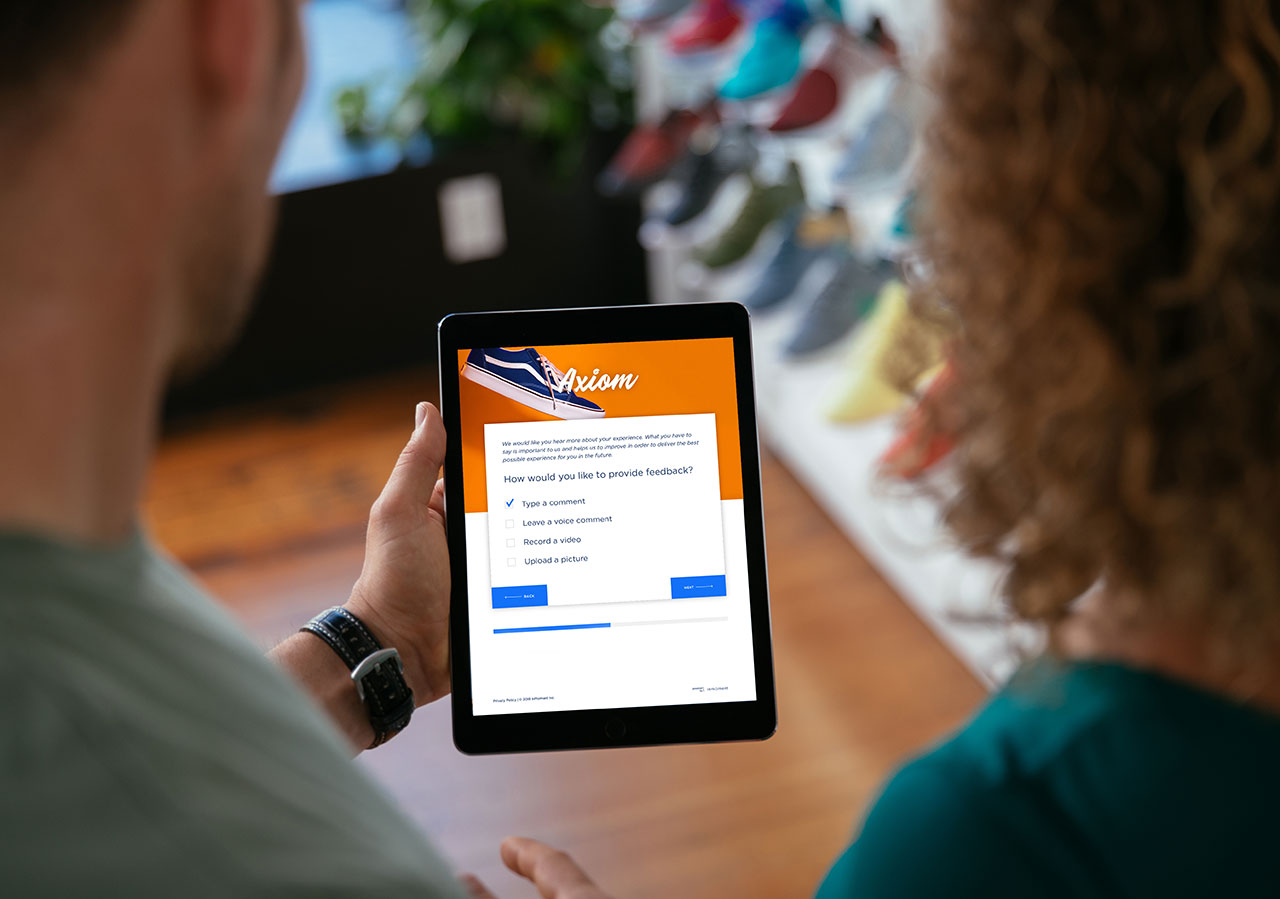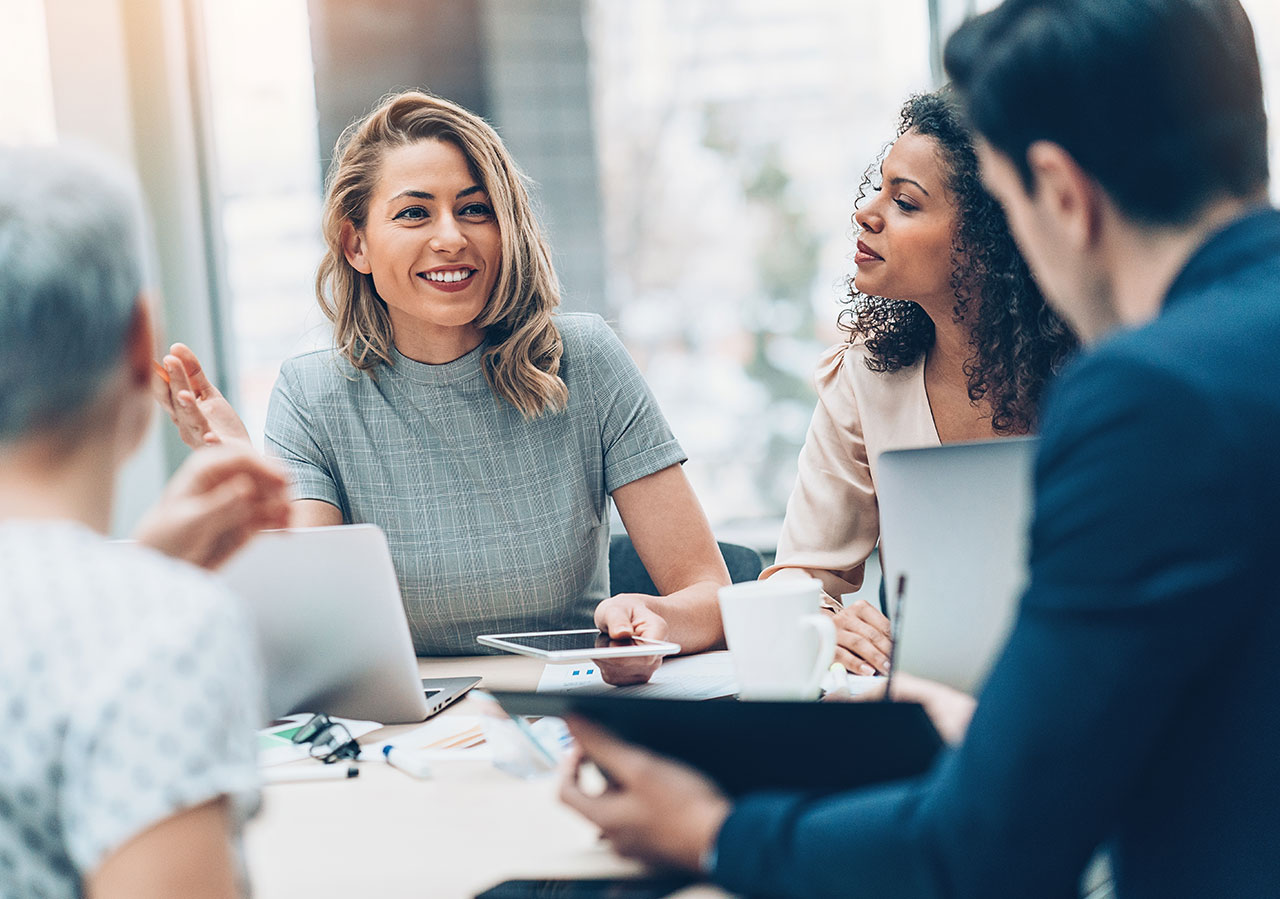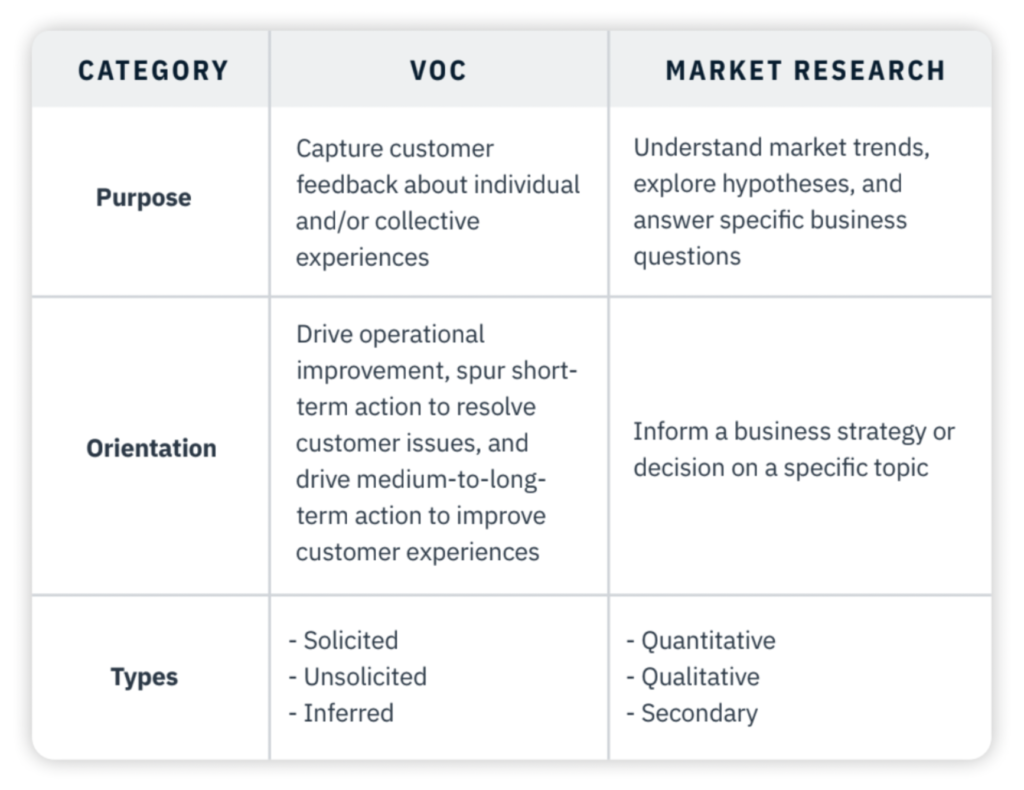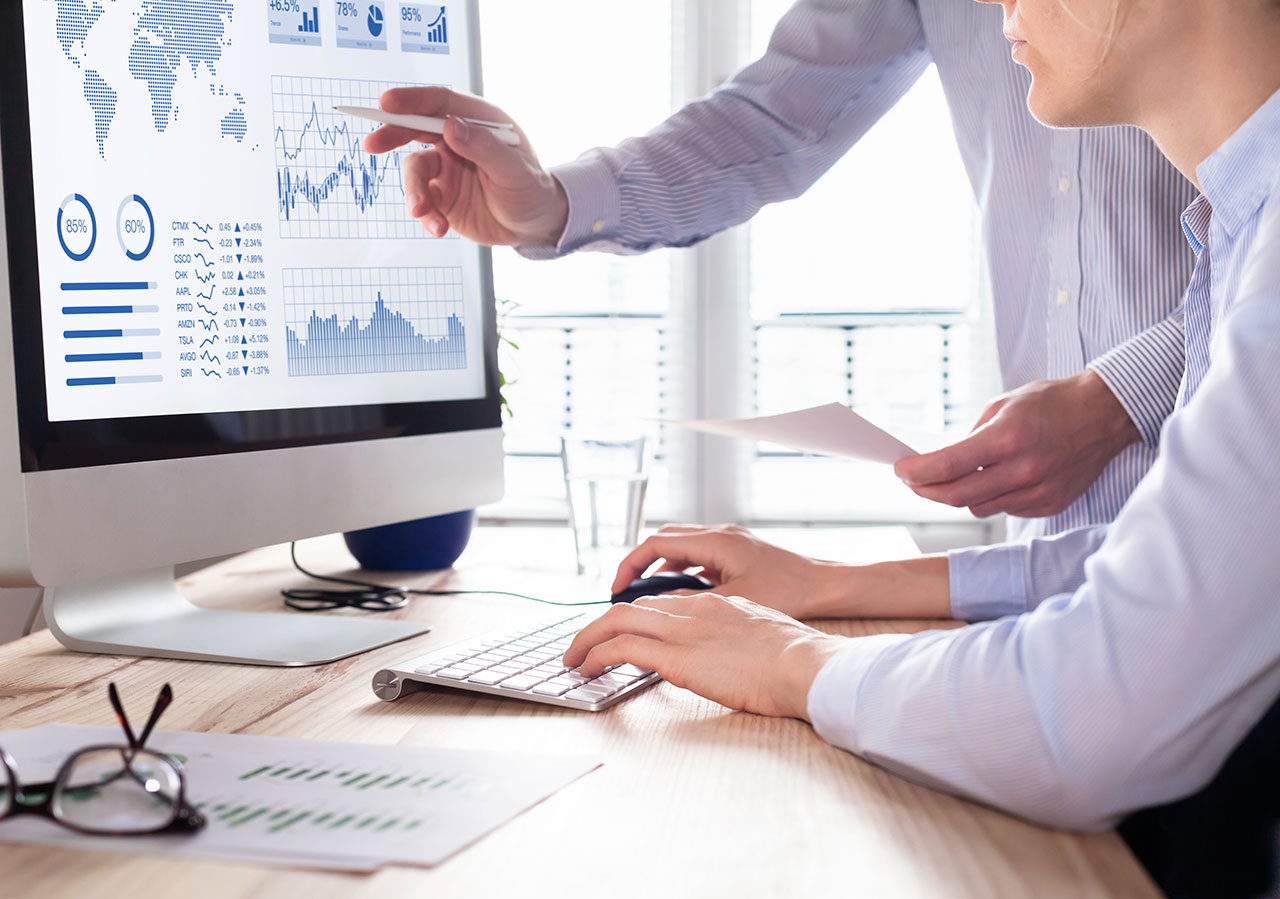
If your brand isn’t capturing customer feedback, unfortunately it won’t know how to improve—this is where the voice of customer (VoC) comes in. This article is designed to give you InMoment’s take on what voice of the customer examples look like.
In the customer experience industry, we call capturing customer feedback a “voice of customer” program, and at InMoment—we know that it’s not enough to capture feedback, you need to capture it, understand it, take action, and make sure customers know their feedback is being heard. We call this “experience improvement.”
Listening to the Voice of Customer Examples
Here are some specific voice of customer examples that can help you listen to customers and gather their valuable feedback.
Direct Feedback Methods
Direct feedback methods involve obtaining explicit and immediate insights directly from customers. By directly engaging with customers, businesses gain valuable, unfiltered feedback that helps them understand specific needs, address concerns, and make targeted improvements to enhance overall satisfaction. Direct feedback methods serve as a proactive approach to understanding and meeting customer expectations in real-time, fostering a more responsive and customer-centric business strategy.
Email Surveys
Email surveys offer a non-intrusive and convenient way to gather valuable insights from customers. By seamlessly integrating a survey link into email communication, you allow customers to share their thoughts at their own pace. This method not only ensures a broad reach but also provides a comfortable environment for customers to express their opinions, resulting in a diverse range of feedback that can uncover both positive experiences and areas for improvement.
Website Surveys
Strategically placed on webpages, these surveys enable organizations to capture real-time insights from visitors navigating their online platforms. By seamlessly integrating survey prompts within the website interface, businesses create an unobtrusive channel for users to share their experiences and preferences.
Furthermore, incorporating net promoter score metrics (NPS) into website surveys provides businesses with a quantitative and standardized way to assess overall customer satisfaction and loyalty. By asking the ultimate question – “How likely are you to recommend our website to a friend or colleague?” – organizations can distill complex customer sentiments into a single, actionable metric.
SMS Surveys
Engaging customers through SMS surveys taps into the immediacy and ubiquity of text messaging. This method leverages the personal nature of text messages, prompting quick responses and enabling businesses to capture real-time feedback. The concise format encourages customers to share their opinions on the go, providing a snapshot of their sentiments. Incorporating SMS surveys into your strategy allows for a direct and immediate channel to connect with customers, fostering a more dynamic understanding of their experiences.
Customer Interviews
Conducting one-on-one quantitative interviews with targeted customers allows for a deeper exploration of individual experiences. By tailoring questions to specific demographics or usage patterns, businesses can gain nuanced insights into the factors influencing customer satisfaction. These interviews provide a qualitative depth to quantitative data, offering a more comprehensive understanding of customer needs, preferences, and pain points. This personalized approach enables businesses to address individual concerns while identifying overarching themes that may impact a broader customer base.
Live Chat
Leveraging live chat for capturing customer commentary in real-time is a powerful way to uncover recurring themes and immediate concerns. Chatbots facilitate instant interactions, allowing businesses to identify emerging issues, challenges, or opportunities. Monitoring these conversations provides a valuable window into customer sentiment, enabling timely interventions and improvements. By analyzing the patterns in live chat interactions, businesses can proactively address common pain points, enhance customer experiences, and showcase a commitment to responsiveness.
Focus Groups
Engaging specific customer segments in focus groups goes beyond surface-level feedback, offering a rich source of qualitative insights. By inviting targeted groups to share their experiences, businesses can delve into the intricacies of individual journeys and preferences. This method provides a platform for customers to express nuanced opinions, uncovering aspects of their interactions that may not be apparent through broader surveys. The in-depth nature of focus groups enables businesses to tailor strategies to meet the unique needs of distinct customer segments, fostering a more personalized and customer-centric approach.
Indirect Feedback Methods
Indirect feedback methods involve gathering insights from various sources that may not involve direct interaction with customers. These methods offer a more observational and nuanced understanding of customer sentiments, preferences, and challenges. Indirect feedback provides valuable context, uncovering trends, patterns, and public perceptions that may not be immediately apparent through direct channels.
Call center recordings
Analyzing call center recordings provides a direct window into customer interactions, allowing businesses to gauge call frequency and identify pain points experienced by customers. These recordings not only reveal the volume of inquiries but also shed light on common challenges faced by customers. By understanding the nature of customer concerns and the frequency with which they arise, businesses can optimize call center processes, allocate resources efficiently, and implement targeted improvements to enhance overall customer satisfaction.
Social media commentary
Utilizing review management to mine social media commentary unveils unfiltered opinions about your brand’s reputation and customer advocacy. Publicly available comments on platforms like Twitter, Facebook, and Instagram serve as a rich source of insights into customer sentiments, recommendations, and criticisms. By understanding how customers express their opinions in the public domain, businesses can tailor strategies to amplify positive sentiment, address concerns, and cultivate a positive brand image.

Product or location reviews
Monitoring product or location reviews provide a valuable indirect feedback channel, offering insights into the comparative standing of your offerings in the market. Reviews not only reveal customer satisfaction levels but also highlight areas where your product or location excels or falls short compared to competitors.
Web chat transcripts
Examining web chat transcripts provides a detailed record of customer inquiries, offering valuable insights into the topics that matter most to your audience. From queries about product details to inquiries about stock levels or product quality, these transcripts reveal customer priorities and concerns. By analyzing the frequency and nature of these interactions, businesses can tailor their communication strategies, optimize website content, and address common customer queries proactively. This method not only enhances customer satisfaction but also contributes to a more informed and responsive customer support system.

Employee Experience
Employees, often on the frontline of customer interactions, possess a unique perspective that can indirectly reveal common issues and roadblocks customers encounter. Focusing on employee experience not only fosters a positive workplace culture but also unveils critical information about the challenges employees face in providing optimal customer support.
Inferred Feedback Methods
Customer behaviors on your website
Use this data to see behaviors such as if customers are abandoning items in their cart, or perhaps there are web pages that are visited less often than others and have room for optimization.
CRM data
Whether your brand uses Salesforce or another brand, it can be helpful to overlay operational feedback with CRM elements like purchase history, a loyalty program, or a customer’s store account, which will show an important operational and segmentation piece of the puzzle.
Common Examples of Voice of Customer Questions
When crafting a Voice of Customer (VoC) survey, the customer survey questions you ask play a pivotal role in unveiling valuable insights. Here are three common questions to consider incorporating into your survey to capture a comprehensive understanding of customer experiences:
1. “On a scale from 1 to 10, how likely are you to recommend our product/service?”
This Net Promoter Score (NPS) question provides a quantitative measure of customer loyalty. It not only gauges overall satisfaction but also offers a clear indication of the likelihood that customers will advocate for your brand.
2. “What aspect of our product/service do you value the most, and why?”
This open-ended question encourages customers to articulate specific features or aspects that resonate with them. By understanding what customers find most valuable, you can focus on enhancing and promoting these key attributes.
3. “Can you share a recent experience with our customer support team? How would you rate the service received?”
This question delves into the customer’s interaction with your support team, providing insights into the effectiveness of your customer service. The combination of qualitative feedback and a quantitative rating allows for a comprehensive evaluation of customer support experiences.
These common VoC questions are designed to elicit specific, actionable feedback that can guide strategic decision-making and drive continuous improvement. You can tailor these customer survey questions to align with your business goals and the unique aspects of your customer journey for maximum impact.
What is the Voice of Customer Process?
At InMoment, the VoC process is called “Continuous Improvement,” and can be broken down into five easy steps: design, listen, understand, transform, and realize.
Step #1: Design Your Program
In this stage, you have the opportunity to set up a strong foundation for your program; a strategy that aligns with the overall business values, financial objectives, and brand promises. This is one of the most important stages that is often overlooked, as you have one shot upfront to invest the time, energy, and resources into getting your program right from the start. You will thank us later throughout the process!
Step #2: Listen To Your Customers
Over the years, listening to customers has dramatically evolved. What used to be limited to sending out surveys through direct feedback, the industry has evolved to include indirect and inferred customer data sources as well. This can include listening posts like customer support interactions, emails, live chats, direct surveys, online product reviews, social media comments, and more!
Step #3: Understand Your Customer Data
For any data to be useful, of course you need to take the time to dig in and understand what your customers are actually saying. Most brands with a VoC or experience improvement program will centralize the data streams and use advanced analytics and behavioral science experts to identify what customers are actually saying. In the modern experience landscape, we have AI machine learning tools that can take your data even further, enabling you to look into customer emotions, intent, and sentiment. This understanding of the customer data stage is critical, and will set you up for the next step.
Step #4: Transform Through Taking Action
In the transformation stage, this is where you’ll thank us that you took the time up front to design your program and identify what success looks like. Now, you have the opportunity to take action on customer data.
Here’s a voice of customer example in action: maybe you can see customers are purchasing lots of one specific product, but the repeat purchases are extremely low. This is an opportunity to figure out the drivers of repeat purchases for your specific brand and its products, and apply those across the board. Can you lower the price? Can you rebrand or repackage the product to match more successful ones?
Step #5: Realize Business Value
This is where voice of customer and experience improvement programs shine. After you pull the necessary triggers in the transformation process, you’ll get the opportunity to evaluate and demonstrate real and tangible results for your business. Whether it’s reducing costs, avoiding customer churn, acquiring new customers, or something else—voice of customer programs will help you get there.
Bringing Voice of Customer Examples to Life
InMoment clients who have strategically implemented the data collection strategies discussed earlier to enhance both customer and employee experiences have continuously realized success. Take a look at these customer experience case studies to see how they have improved their organizations through voice of customer programs.
Foot Locker
As you can imagine, Foot Locker had a ton of data points on their hands. The brand had loads of customer behavior intelligence, but this data was coming from so many sources that it was hard to see the big picture. Using the InMoment XI Platform, this brand was able to consolidate all of its operational data sources and listening posts into one platform, giving it the intelligence needed to create a unique experience for every customer. The result? Foot Locker reduced customer listening costs, added new listening posts across video and social media, and experienced faster and more accurate resolution to its business challenges.
Docusign
Signing a digital agreement is now table stakes for most companies. That’s in large part thanks to DocuSign, a brand where growth is driven by customers who share the easy, secure e-signature experience with colleagues and clients. To listen to its customer feedback, the DocuSign product team uses in-app NPS microsurvey feedback to continually optimize end user experience. This Net Promoter Score program, powered by InMoment, also identifies brand enthusiasts who are the engine of a robust customer advocacy program.
Glassdoor
This brand uses the InMoment Platform to capture a unified view of employer experience, and now thousands of cross-industry employers across use the Glassdoor website to help them recruit and hire quality candidates.
Putting the five phases of continuous improvement to the ultimate test, Glassdoor monitors and improves the entire customer journey using microsurveys to capture sentiment at moments that matter for employees. Integration with Salesforce enables front line teams to close the loop with customers in real-time. Advanced text and sentiment analytics empower Glassdoor teams to analyze feedback, and customized dashboards ensure that each team can quickly see what is important to them and prioritize improvement efforts.
Elevating Your Business with Voice of Customer Examples
Voice of customer and experience improvement programs have dramatically evolved over the last few decades—what used to be limited to direct survey feedback has extended to include indirect and inferred feedback methods too. The power of a VoC program is in the five elements of achieving continuous improvement: design, listen, understand, transform, and finally, realize business value. We truly believe it’s improving experiences that turn customers into lifelong brand advocates, helping your business achieve its objectives at the same time.
InMoment has been a trusted partner for numerous businesses on their journey to harness the power of Voice of Customer (VoC). Through a proven track record of providing comprehensive VoC solutions, InMoment has empowered organizations to gain deep insights into customer experiences, preferences, and expectations.
We encourage you to take the next step in elevating your customer understanding. Schedule a live demo with InMoment to witness real-time VoC examples in action and engage with a representative who can share tailored insights and case studies specific to your industry. By leveraging InMoment’s expertise, businesses can not only listen to their customers but also transform these insights into strategic actions that drive meaningful improvements and long-term success.






